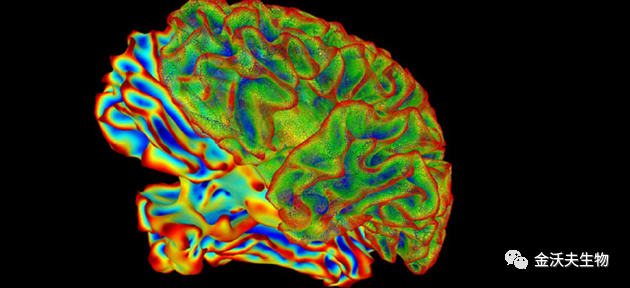(Blood-brain barrier,BBB)
The blood-brain barrier is one of the important self-protection mechanisms in humans. It is composed of brain capillary endothelial cells, glial cells, and choroid plexus, allowing only specific types of molecules from the blood to enter brain neurons and other surrounding cells, and can prevent various harmful substances from entering brain tissue. The brain, as a confidential and important part of the human body, controls multiple importantfunctions. The blood-brain barrier can block harmful substances in the blood and protect the safety of brain tissue.
Alzheimer’s disease,AD
Alzheimer’s disease (AD) is a progressive neurodegenerative disease with insidious onset. In clinical practice, comprehensive dementia is characterized by memory impairment, aphasia, aphasia, loss of recognition, impairment of visual and spatial skills, executive dysfunction, and personality and behavioral changes. The etiology is still unknown. Premature dementia refers to individuals who develop symptoms before the age of 65; Individuals who develop dementia after the age of 65 are referred to as senile dementia. The occurrence of Alzheimer’s disease (AD) is often associated with β- Amyloid protein (A β) Accumulation and Tau protein entanglement are linked, and more research is gradually listing neuroinflammation as one of the factors contributing to the occurrence of AD.
Quote: What is Alzheimer’s disease? Take a look at this knowledge. People’s Daily Online. 2023-09-20
Note that there is a type of bacteria that can penetrate the blood-brain barrier
Recently, researchers from Baylor College of Medicine in the United States published a research paper titled: Toll like receptor 4 and CD11b expressed on microglia coordinate erasure of Candida albicans cerebral mycosis in the Cell Reports sub journal.
We have discovered a fungus called Candida albicans that can enter the brain through the bloodstream. As the popular saying goes, “Kicking the leg of a cripple can cause Alzheimer’s disease like changes.” In this study, we further revealed the molecular mechanisms by which Candida albicans breaks through the blood-brain barrier and enters the brain, leading to Alzheimer’s disease like changes.
How does Candida albicans enter the brain? “We found that Candida albicans produces an enzyme called secreted aspartate protease (Saps), which disrupts the blood-brain barrier, allowing fungi to enter the brain and cause damage,” said Dr. Yifan Wu, a postdoctoral pediatric scientist working at the Corry Laboratory.
Candida albicans
Candida albicans (scientific name: Candida albicans) is a yeast that can cause opportunistic infections. It is commonly found in the bacterial community of the human digestive and urogenital tracts. About 40% to 60% of healthy adults have Candida albicans in their oral and digestive tracts. Candida albicans usually coexist with the human body, but can overgrow during immune deficiency and cause candidiasis. It is the most common pathogenic bacterium in the Candida genus
According to a study in Cell Reports, fungi that we usually don’t pay much attention to may also be one of the culprits of Alzheimer’s disease. Researchers from Baylor School of Medicine and collaborating institutions have discovered through animal models how Candida albicans enters the brain and how it activates two independent mechanisms in brain cells that promote its clearance (which is crucial for understanding the development of Alzheimer’s disease), and have produced β Amyloid protein (A β) Peptides (toxic protein fragments of amyloid protein) are considered to be the core of the development of Alzheimer’s disease.
Dr. David Corry said. David Corry is the Chairman of Pathology at the Fulbright Foundation and a professor of pathology, immunology, and medicine at Baylor University. He is also a member of the Baylor L. Duncan Comprehensive Cancer Center. In 2019, we found that Candida albicans did indeed enter the brain and produce changes very similar to Alzheimer’s disease. Inflammation caused by Candida albicans often accompanies
A β The reason for the production of amyloid like peptides is that Sap can hydrolyze amyloid precursor proteins (APPs).
However, these peptides also attract the attention of brain immune cells – microglia, which is crucial for the subsequent clearance of Candida albicans by the brain itself. In addition, the toxin Candidalysin produced by Candida albicans activates microglia through another pathway. If this pathway is disrupted, fungi in the brain cannot be eliminated.
Researchers point out that this work may become an important puzzle for understanding the occurrence of Alzheimer’s disease. Previous studies have suggested that proteases in the brain are involved in the breakdown of apps and contribute to A β The accumulation of has laid the groundwork. And now it can be confirmed that this exogenous protease from fungi can also cause A β Peptide like production.
Researchers point out that further evaluation of the role of Candida albicans in the development of Alzheimer’s disease is needed in the future, which may also lead to novel treatment strategies for AD.
Reference materials:
[1] Yifan Wu et al, Toll like receiver 4 and CD11b expressed on microglia coordinate erasure of Candida albicans cerebral mycosis, Cell Reports (2023) DOI: 10.1016/j.celrep.2023.113240
[2] Brain functional infection products Alzheimer’s disease like changes, say new study Retrieved October 17, 2023 from https://medicalxpress.com/news/2023-10-brain-fungal-infection-alzheimer-disease-like.html
Post time: Dec-22-2023









